Table of Contents
Introduction
Sometimes, the real monsters in Hawkins aren’t creatures at all—they are human. Over the seasons, the town has seen all kinds of bullies, from the ones in the school hallway to abusive parents and sneaky, manipulative adults.
This makes us wonder: who was the worst bully of them all? Fans often argue about whether it was Troy, the middle school menace; Billy, the aggressive older brother; or the cold and calculating Dr. Brenner. To find the answer, we will look at every major bully, examine how they treated others, and finally decide who deserves the title of Hawkins’ cruelest tormentor.
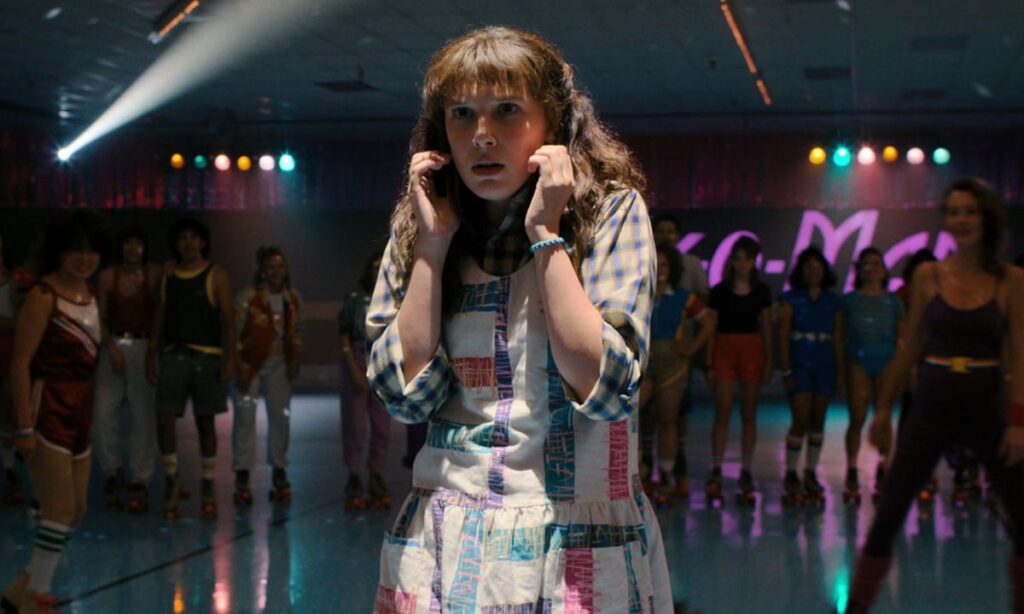
Before we begin the article, we make it clear that we don’t glorify bullying and harming behavior and strongly condemn them – anything that inflicts physical, mental, or psychological pain to others.
What counts as bullying in Stranger Things?
Before we can name the worst bully, we need to understand what bullying means in the world of Stranger Things. Bullying isn’t just one thing; it can show up in many different ways. We need to consider the era that it represents too. Bullying in Stranger Things can be physical, like when someone pushes, hits, or threatens the character. It can be verbal, which means using insults and humiliation to hurt feelings. It can also be psychological, which is when someone uses control, fear, or tricks to get inside your head. Pretty psychic, right?!
Some bullies are just kids causing trouble at school, some think they are saviors and in the interest of others, they hurt ones who are actually trying to solve something; And there are some other adults who use their power and authority to hurt people in ways that leave scars you can’t see.
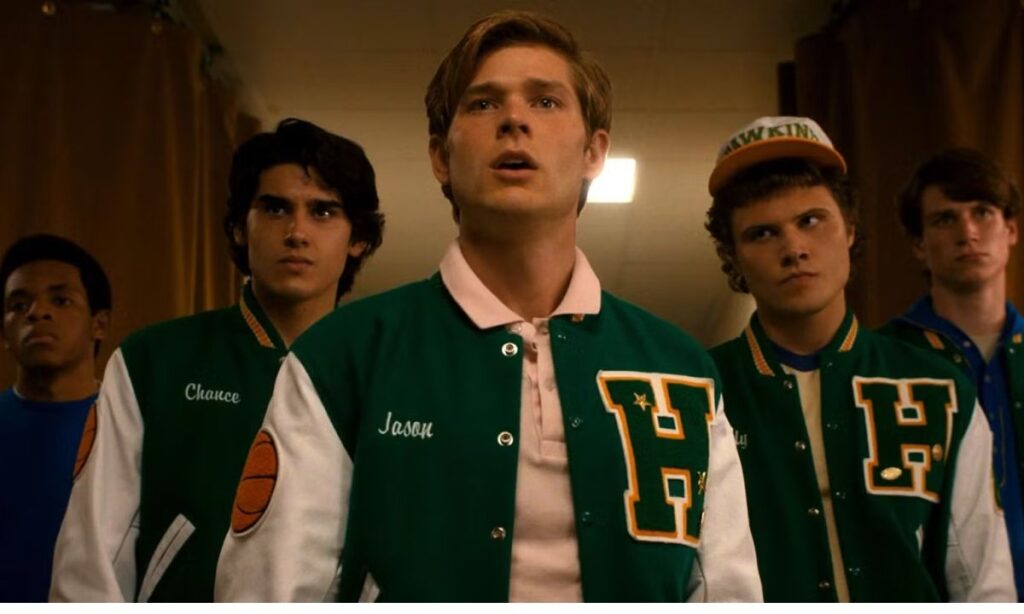
How did the Duffer Bros handle bullying, balancing storytelling and realism?
The Duffer Brothers grew up in the ’80s, and you can tell. They didn’t romanticize it—they showed the ugly side too. But they also used the lens of nostalgia meets empathy.
They approached bullying as a storytelling tool:
- Most of the main characters of the story are outcasts. Those who ultimately save the world.
- It mirrors larger monsters—the Demogorgon, Vecna, the Mind Flayer—as metaphors for internalized fear and trauma.
- It shows that human cruelty can be as dangerous as supernatural evil.
They didn’t always get it perfect, though. In early seasons, certain scenes (like Eleven’s treatment at school or Will’s teasing for being “different”) hit harder in hindsight, especially in today’s context where we’re more vocal about mental health, homophobia, and trauma.

The bullies of Stranger Things
Troy and James (Season 1)
The first bullies we meet are Troy and his friend James. They constantly made fun of Mike, Dustin, and Lucas for being different. Their most dangerous moment came when Troy held a knife to Dustin and forced Mike to jump off a high cliff. Eleven had to step in to save him. While they might seem like childish troublemakers next to other villains, their actions almost got Mike killed.
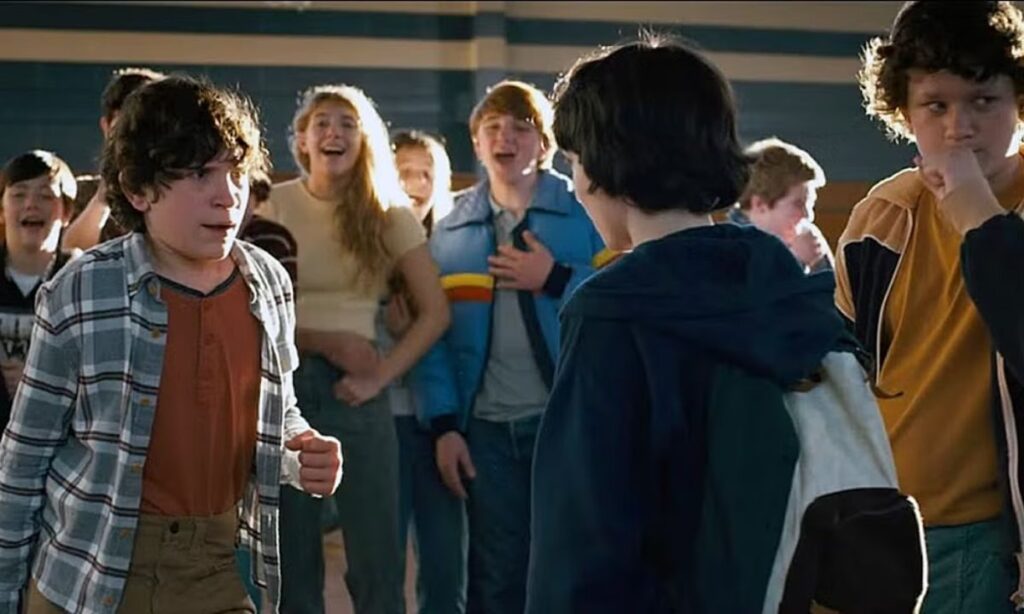
Steve Harrington (Early Season 1)
Before he became a hero, Steve Harrington was not a nice guy. He was arrogant and liked to pick on Jonathan Byers. He made fun of him, broke his camera, and pressured Nancy Wheeler to act in ways she wasn’t comfortable with. But Steve’s story is one of change. He grew up and learned from his mistakes, turning into one of the group’s most loyal and brave protectors.
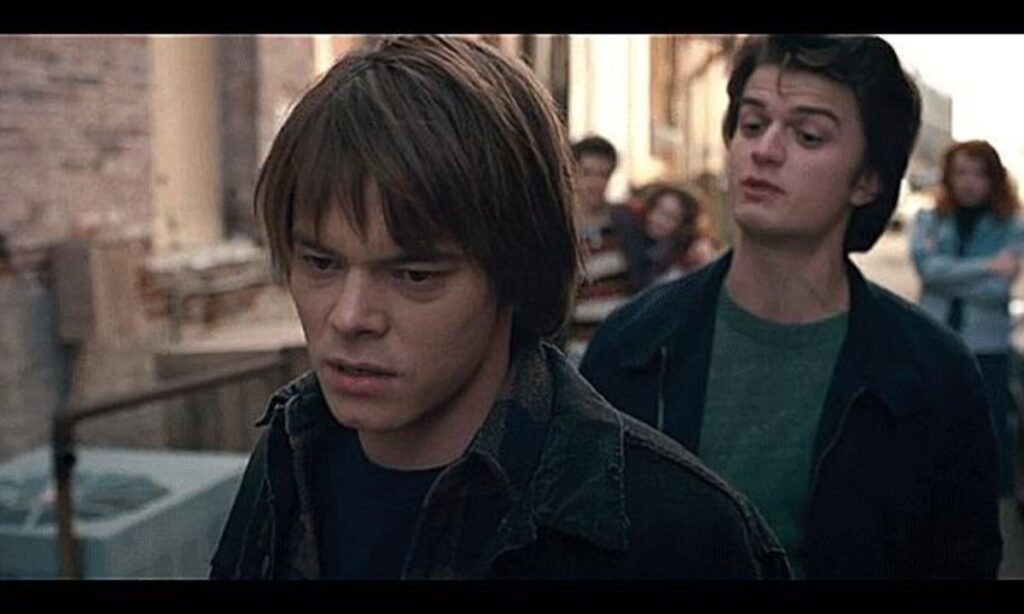
Billy Hargrove (Season 2–3)
Billy is often remembered as the most terrifying school bully. He used his strength to scare everyone, including his own stepsister, Max. He threatened her friend Lucas because of his race and got into violent fights, especially with Steve Harrington. It’s important to know that Billy learned this behavior from his own father, who was abusive to him. This shows how bullying can be a painful cycle that gets passed down in families.

Angela (Season 4)
When Eleven moved to California, she met her new bully, Angela. Angela’s bullying wasn’t about being physical; it was about humiliation. She made fun of El in front of the whole school and led others in mocking her. The most shocking moment was at the roller rink, where Angela cruelly embarrassed Eleven, which led to El finally fighting back and hitting Angela with a roller skate.
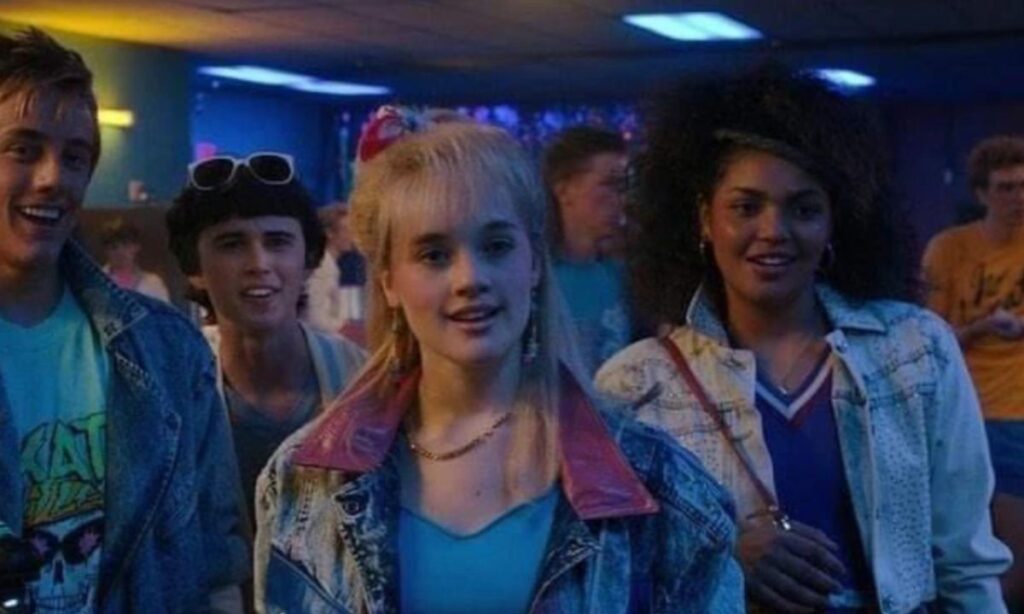
Dr. Martin Brenner (“Papa”)
Dr. Brenner, who called himself Eleven’s “Papa,” was the most powerful and complex bully. He wasn’t a schoolyard bully; he was a scientist who controlled and experimented on children in his lab. He lied to Eleven, took away her freedom, and never let her have a normal childhood. Even though he said he loved her, his actions were selfish and incredibly cruel, all because he wanted to use her special powers.
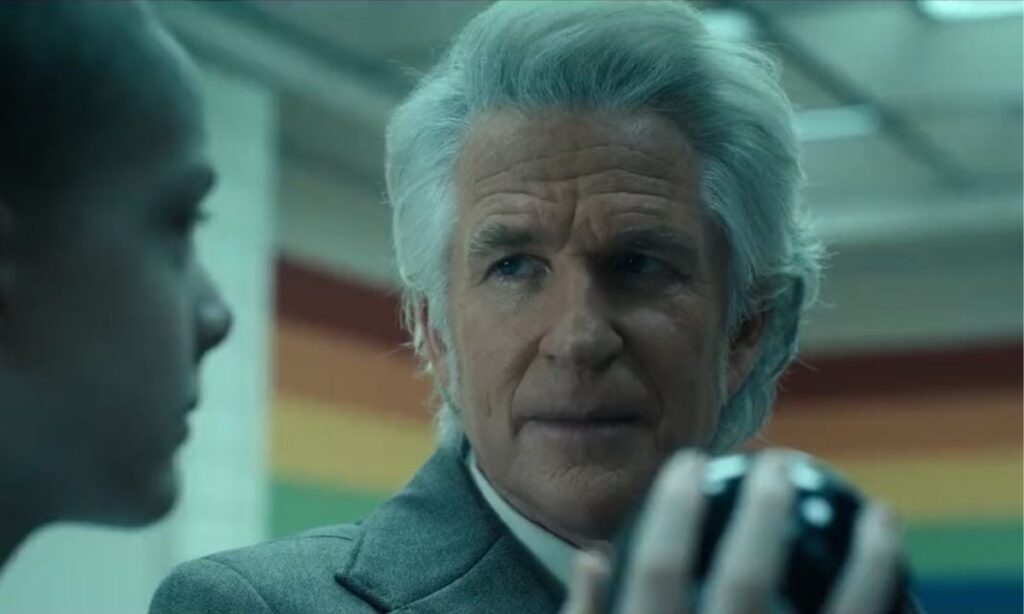
Jason Carver (Season 4)
After his girlfriend Chrissy died, Jason Carver turned into a dangerous bully. He was so angry and confused that he started a witch hunt against Eddie Munson. Jason convinced other teenagers that Eddie was part of a Satanic cult, which spread fear and panic through the town. His anger made him so enraged and fantasizing that he nearly killed Lucas when he found him trying to help Max, showing how his bullying turned deadly.
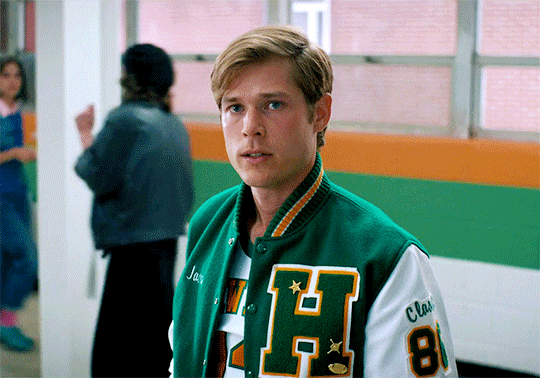
| The show is from the 80s – a time before social media, but full of rigid hierarchies. Kids who exude weird behavior were often targets simply for liking sci-fi, comics, or being socially awkward. The show’s Hellfire Club panic storyline mirrors the real Satanic Panic of the 1980s, where D&D was demonized by adults—leading to fear, isolation, and misunderstanding. |
Comparing the bullies: Who was the worst?
Before we get this started, every bully does some kind of irreversible damage to their peers. But, there are some patterns based on which we have compared their actions, intentions, and redemption or ruin arc, if there is any.
Troy vs. Angela: Childhood vs. Teenage Cruelty
While Troy’s bullying was reckless and came from a childish place, given their age, Angela’s cruelty was more calculated and mean. While Troy’s actions were physically dangerous, Angela’s public humiliation of Eleven was targeted and meant to damage her socially, which can hurt just as much.
Steve vs. Billy: Redemption vs. Ruin
Steve’s early bullying came from immaturity, and he was able to change. He redeemed himself by becoming a loyal protector to Dustin and the other kids. Billy, on the other hand, never stopped being cruel. He continued to torment Max and others until his death, which makes him a much more dangerous and lasting bully.
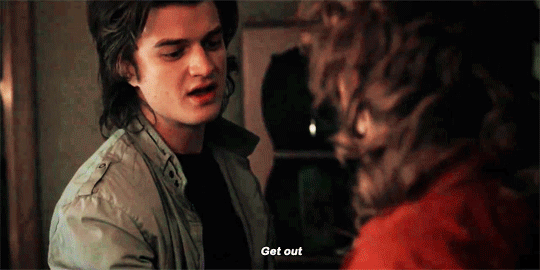
Jason vs. Brenner: Mob Mentality vs. Authority
Jason used a mob mentality to turn the whole town of Hawkins against Eddie, and his actions put many lives in danger. But Dr. Brenner’s abuse was different. He used his authority to create a system of long-lasting fear and control over dozens of children. His betrayal of Eleven stands out as one of the darkest and most complex forms of manipulation in the entire series.
The worst bully in Stranger Things: Billy Hargrove
While every bully left their mark, Billy Hargrove stands out as the worst one in Stranger Things. His violence went far beyond simple teasing. He was physically abusive toward his stepsister, Max, and he threatened others with real danger. He was also openly racist toward Lucas, which added a deeply disturbing layer to his cruelty.
Unlike bullies like Angela or Troy, Billy’s actions had lasting emotional effects on many characters. Dr. Brenner’s abuse was more systematic and controlled, but Billy’s aggressive presence felt raw, personal, and truly terrifying. Although he had a moment of redemption in Season 3 when he sacrificed himself to save Eleven, this doesn’t erase his behavior. His abusive nature throughout Seasons 2 and 3 is what cements his title as Hawkins’ most notorious bully.
Other bullies in Stranger Things
Tom Holloway (Season 3)
Tom Holloway was Nancy Wheeler’s boss at the local newspaper, The Hawkins Post. He constantly belittled and mocked her ideas just because she was a young woman. His behavior showed how bullying can also happen in a workplace, where someone uses their power to make others feel small, which was most common in the 80s era, where women were underrepresented in the workforce.
The Hawkins Mob (Season 4)
This wasn’t a single bully, but a large group of teenagers led by Jason Carver. They show how dangerous peer pressure and mob mentality can be. When people get together in an angry group, they can become bullies who are much more dangerous than they would be on their own, turning the whole town into a threatening place.
Why bullying is woven into Stranger Things’ storytelling?
At its heart, Stranger Things is about more than just supernatural monsters—it’s about real-life struggles that many people face. From the very first episode, bullying is baked into the DNA of Stranger Things.
- There’s Eleven, who’s bullied for being different (and “weird”), represents kids ostracized for not fitting in.
- Will is bullied for being soft-spoken, artistic, and perceived as “gay” — reflecting real 1980s homophobia and toxic masculinity.
- Mike, Dustin, and Lucas face bullying for being nerds in a time when being into D&D or science was seen as “uncool.”
- Max, Nancy, and even Eleven experience subtle forms of gender bias and mockery — being talked over, dismissed, or objectified.
The show also explores the cycle of abuse, where the cruelty Billy learned from his father shaped him into a cruel person. But it’s not all dark; we also see themes of resilience and growth. Steve redeems himself by becoming a better person, and Eleven learns to find her own powerful voice. By including these different bullies, the show makes its sci-fi story feel grounded in human experiences we can all understand.
Problematic patterns found in Stranger Things that sparked debates
While Stranger Things mostly handles bullying responsibly, some portrayals have sparked discussions.
Normalization of violence as retaliation: In some scenes, bullying is “resolved” through violence — like when Eleven uses her powers to harm bullies. It’s satisfying narratively, but also raises questions about glorifying revenge.
Homophobic undertones in Will’s storyline: Will’s constant labeling as “gay” by bullies — without proper acknowledgment of how that affects him — is uncomfortable. It reflects the 1980s reality, yes, but modern audiences wish the narrative gave more space to his identity and healing.
Institutional neglect: The indifference of adults (teachers, police, parents) mirrors how bullying wasn’t taken seriously in the ’80s. Today, that passivity would be condemned — and Stranger Things uses that silence to show how the system failed its kids.
Conclusion
So, after looking at all of them, who was the worst bully in Stranger Things?
While villains like Angela, Troy, Jason, and Dr. Brenner all caused a lot of pain, the title goes to Billy Hargrove. His violent abuse, his racism toward Lucas, and the constant fear he created left a deep and lasting mark on characters like Max and Steve. His final sacrifice in Season 3 showed he had some good in him, but it does not erase all the damage he did.
The show reminds us that in Hawkins, the most frightening monsters don’t always come from the Upside Down. Sometimes, they are the bullies who walk the school hallways.
